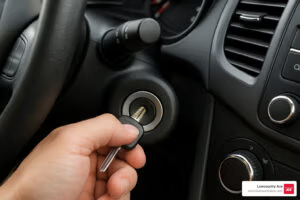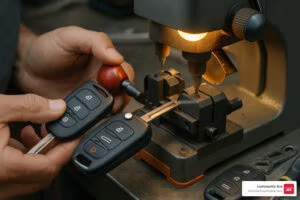Quick Guide to Cleaning Garden Tools:
1. Remove Soil and Debris: Use a hose or stiff brush.
2. Disinfect: With vinegar, rubbing alcohol, or bleach solution.
3. Dry and Oil: Prevent rust and lubricate.
4. Sharpen Blades: Maintain cutting effectiveness.
5. Handle Maintenance: Protect wooden handles with linseed oil.
Gardening is a labor of love, and your tools are your best allies. Keeping them clean not only makes your gardening more enjoyable but also prolongs the life of your tools. It’s essential to understand that clean garden tools are crucial for preventing the spread of pathogens that could harm your plants. Just like washing your hands before eating keeps you healthy, cleaning your tools keeps your garden thriving.
The helpful team at Lowcountry Ace knows that taking care of your garden also means taking care of your tools. By following a few simple steps, you can prevent the spread of disease, reduce wear on your tools, and ensure they are always ready for the job. In short, clean tools mean a healthy garden and less expenditure on replacements or repairs in the long run.
In the guide that follows, we’re going to dive deeper into each of these essential steps, designed to make the process as easy as pie. Whether you’re a seasoned gardener or just starting, these tips are sure to keep your garden tools in tip-top shape, ensuring your garden remains a source of joy and pride.
Step 1: Remove Soil and Debris
Before diving into the nitty-gritty of how to clean garden tools, it’s critical to start with the basics: removing soil and debris. This initial step is simple but crucial for preventing the spread of diseases in your garden and keeping your tools in good condition.
Hose Down: The easiest way to kick off the cleaning process is by using a garden hose. A strong jet of water can quickly remove loose soil and debris from your tools. It’s an effective method for large tools like shovels and rakes.
Washing Hand Tools: For smaller tools, such as hand trowels or pruning shears, a thorough wash under running water can do the trick. It’s more controlled and ensures that every nook and cranny is free from soil.
Stiff Brush: Sometimes, water alone isn’t enough, especially if the soil has dried on the tools. This is where a stiff brush comes in handy. A good scrub can dislodge stubborn dirt and ensure that your tools are ready for a more thorough cleaning.
Pressurized Sprayer: For those with access to a pressurized sprayer, this tool can be a game-changer. It combines the simplicity of hosing down with the effectiveness of a stiff brush, making it ideal for removing stuck-on debris without much elbow grease.
The goal here is not just about cleanliness; it’s about maintaining the health of your garden. By removing soil and debris, you’re taking the first step towards preventing the transfer of pathogens that could harm your plants. Plus, clean tools are easier to inspect for wear and tear, helping you address any issues before they become serious problems.
With your tools now free from soil and debris, you’re well on your way to ensuring they remain effective and durable. Next, we’ll move on to the all-important task of disinfecting your garden tools, ensuring they’re not just clean but also safe to use around your plants.
Stay tuned as we explore the various methods and products that can be used for effective disinfection, keeping your garden healthy and your tools in prime condition.
Step 2: Disinfect Tools
Disinfecting your garden tools is crucial to prevent the spread of diseases in your garden. Here are some simple yet effective methods to keep your tools germ-free.
Vinegar for Rust Removal
Vinegar isn’t just for salads; it’s a powerful tool against rust. Its acidic properties make it perfect for tackling rust on your garden tools. Here’s how:
- Mix a solution of equal parts water and white vinegar.
- Soak your tools in the mixture for at least 24 hours.
- Scrub the rust away with a toothbrush or scouring pad.
- Rinse and dry your tools thoroughly.
For extra rust-fighting power, add a tablespoon of salt per cup of vinegar.
Rubbing Alcohol for Disinfection
Rubbing alcohol is great for disinfecting tools, especially those used for cutting.
- Pour rubbing alcohol into a spray bottle.
- Spray directly onto the tool’s surface or apply with a damp cloth.
- Let it air dry to ensure all the pathogens are killed.
Rubbing alcohol evaporates quickly, making it a convenient option for quick disinfection.
WD-40 for Lubrication
WD-40 does more than just lubricate; it helps protect your tools from rust and corrosion.
- Spray a light coat of WD-40 on the metal parts of your tools.
- Wipe any excess with a clean cloth.
This not only keeps your tools working smoothly but also forms a protective barrier against moisture.
Bleach Solution for Heavy-Duty Cleaning
For a deeper clean, especially on tools that have been in contact with diseased plants, a bleach solution is effective.
- Mix one part bleach with nine parts water to create a 10% solution.
- Soak your tools in the solution for at least 10 minutes.
- Rinse thoroughly with water and dry completely.
This method is best reserved for large tools and should be used sparingly to avoid corrosion.
Safety Precautions
When using any of these disinfectants, safety should be your top priority.
- Wear gloves to protect your hands.
- Ensure good ventilation when using strong chemicals like bleach.
- Label all your DIY solutions clearly to avoid confusion.
By following these simple steps, you can ensure your garden tools are not only clean but also safe for your plants. Keeping your tools in good condition is the key to a healthy, beautiful garden. The helpful team at Lowcountry Ace is always here to provide advice and solutions for all your gardening tool needs.
Moving on, let’s tackle how to dry and oil your tools for long-term protection against rust and corrosion.
Step 3: Dry and Oil Tools
After you’ve cleaned and disinfected your garden tools, the next crucial step is to ensure they’re thoroughly dried and properly oiled. This step is fundamental in preventing rust and keeping your tools in optimal condition for years to come.
Air Dry
First, let your tools air dry. It’s best to leave them out in a well-ventilated area or in direct sunlight if possible. This helps to evaporate any remaining moisture, a key culprit in rust formation. Ensure each tool is completely dry before moving on to oiling. This might seem like a small step, but it’s vital for the longevity of your tools.
Mineral Oil
Once dry, it’s time to oil your tools. Mineral oil is a great option for this purpose. It’s light, doesn’t go rancid, and forms a protective barrier against moisture. Apply a small amount of mineral oil to a clean rag and thoroughly wipe down all metal parts of your tools. The oil creates a protective layer that repels water and prevents rust.
Linseed Oil
For wooden handles, linseed oil is your best friend. It penetrates deep into the wood, providing protection and revitalizing the material. Just a light coat will do. Use a clean cloth to apply the linseed oil, ensuring an even coverage. This not only preserves the wood, making it more durable against the elements, but it also keeps it looking good.
Prevent Rust
The combination of drying and oiling your garden tools is the best defense against rust and corrosion. Rust can severely damage your tools, making them ineffective and unsafe to use. By following these steps, you significantly reduce the risk of rust forming, ensuring your tools remain in top condition.
Maintaining your garden tools isn’t just about keeping them functional; it’s also about safety and effectiveness. The helpful team at Lowcountry Ace recommends incorporating these practices into your routine to extend the life of your garden tools. By taking the time to properly dry and oil your tools, you’re investing in their longevity and performance, making your gardening efforts more enjoyable and productive.
Next, we’ll dive into how to keep those blades sharp and ready for action.
Step 4: Sharpen Blades
Keeping your garden tools sharp is not just about making your work easier; it’s also about ensuring clean cuts that are healthier for your plants. Dull blades can damage plants and make your tools work harder than they need to. Here’s how to sharpen your garden tools effectively using sandpaper, a sharpening stone, and a few simple techniques to maintain the edge.
Using Sandpaper
For lightly dull blades, sandpaper can be an easy fix. Start with a coarser grit to remove any rust or big nicks, and then move to a finer grit to smooth out the blade. This method works well for tools like shears and spades.
- Secure the tool in a vise or hold it firmly.
- Rub the sandpaper along the blade in the direction of the edge.
- Continue until you see a bright, smooth surface along the edge.
Sharpening with a Stone
A sharpening stone, or whetstone, is ideal for honing the edges of your tools to a sharp finish. Whether you’re working on shears, pruners, or hoes, the process is straightforward:
- Lubricate the stone with oil or water, depending on the type of stone you have.
- Hold the tool at the angle of the existing edge (usually about 20 to 45 degrees) against the stone.
- Push the blade across the stone in a sweeping motion, as if you’re trying to shave off a thin layer from the stone.
- Repeat this process several times, checking the sharpness of the blade as you go.
- Flip the tool and repeat on the other side if necessary.
Maintaining the Edge
Once your tools are sharp, keeping them that way requires minimal effort but regular attention. After each use, clean the blade and give it a quick once-over with a sharpening stone to maintain its edge. This prevents the blade from becoming too dull over time, making it easier to sharpen when needed.
Remember:
- Always wear gloves to protect your hands during the sharpening process.
- Sharpening too often or too aggressively can wear down your tools prematurely. Aim to maintain the edge rather than create a new one each time.
By following these steps, you can ensure your garden tools are always in top condition, making your gardening more efficient and enjoyable. Sharp tools not only make your job easier but also help keep your garden healthy. Next, we’ll look at how to take care of the handles of your tools, ensuring they stay comfortable and functional year after year.
Step 5: Handle Maintenance
After ensuring the metal parts of your garden tools are clean, sharp, and rust-free, it’s crucial not to overlook the handles. Wooden handles, in particular, require some attention to prevent cracking, splintering, and weathering. Here’s how to keep them in good shape:
Wooden Handles
Wood is a common material for garden tool handles because it’s sturdy, comfortable to grip, and absorbs shock well. However, wood can dry out, crack, or weaken over time if not properly cared for. To maintain your wooden-handled tools, follow these simple steps:
-
Clean: Wipe the handle with a damp cloth to remove dirt and grime. Ensure it’s completely dry before proceeding to the next step.
-
Inspect: Regularly check for splinters, cracks, or signs of wear. Lightly sand any rough areas to prevent injury and improve the handle’s longevity.
-
Protect: Apply a coat of linseed oil to the handle. This natural oil penetrates deep into the wood, providing a protective barrier against moisture and reducing the risk of cracking.
-
How to Apply Linseed Oil: Use a clean rag or brush to apply a thin layer of oil over the entire wooden handle. Allow it to soak in for a few hours, then wipe off any excess oil with a clean cloth. For the best results, do this at least once a year, preferably at the start or end of the gardening season.
Prevent Cracking
Preventing cracking is essential for keeping your garden tools safe and comfortable to use. Cracked handles can lead to injuries and may cause the tool to break when you’re working with it. The steps above are not only for maintenance but are preventive measures against the common issue of wood drying and cracking.
By taking care of the handles, you’re not just preserving the tool’s integrity; you’re also ensuring that every gardening task is a pleasure, free from the distraction of uncomfortable or unsafe equipment.
The helpful team at Lowcountry Ace is ready to assist you with advice and the right products for your garden tool care. Whether it’s linseed oil for your wooden handles or any other maintenance supplies, we’ve got you covered.
Maintaining your garden tools’ handles is a straightforward task that can greatly extend their lifespan and enhance your gardening experience. Just like the blades need to be sharp, handles need to be smooth and robust. With these simple care steps, your tools will serve you well, season after season.
Next, we’ll dive into some frequently asked questions about cleaning garden tools to clear up any uncertainties and ensure you’re fully equipped with the knowledge to keep your gardening tools in prime condition.
Frequently Asked Questions about Cleaning Garden Tools
When it comes to how to clean garden tools, many gardeners have questions. Let’s tackle some of the most common inquiries with straightforward answers. The goal is to make sure you feel confident and informed about keeping your tools in the best shape possible.
Can I use household products to clean my garden tools?
Yes, you can use household products to clean your garden tools effectively. Items like vinegar, baking soda, and rubbing alcohol are not only accessible but also powerful cleaning agents. For example, vinegar can help remove rust, while rubbing alcohol can disinfect tools to prevent the spread of disease. After using these products, it’s crucial to rinse and dry your tools thoroughly to avoid any potential damage.
How often should I clean my garden tools?
Ideally, you should clean your garden tools after every use to prevent soil and sap buildup, which can lead to rust and degradation. However, a more thorough cleaning and disinfection should be done at least once a year, preferably at the end of the gardening season. This helps ensure your tools are clean, sanitized, and ready for storage, reducing the risk of spreading pathogens the following season.
Why is it important to disinfect garden tools?
Disinfecting your garden tools is crucial for preventing the spread of plant diseases, fungi, and bacteria from one part of your garden to another. Tools that are not disinfected can easily become vectors for disease, which can have devastating effects on your plants. By using a disinfectant, like a 10% bleach solution or rubbing alcohol, you ensure that your tools are not only clean but also free from harmful pathogens that could affect plant health.
The helpful team at Lowcountry Ace is always ready to provide you with the products and advice you need to maintain your garden tools. Whether you’re looking for specific cleaning agents or need guidance on the best practices for tool maintenance, we’ve got you covered.
By keeping these FAQs in mind and following the recommended practices for cleaning and maintaining your garden tools, you’re setting yourself up for a successful, healthy gardening experience. Your tools will last longer, perform better, and most importantly, help keep your garden thriving.
Next, let’s explore the benefits of routine maintenance and how it can further enhance the longevity and effectiveness of your gardening tools.
Conclusion
Taking care of your garden tools isn’t just a one-time task—it’s an ongoing commitment. But it’s a commitment that pays off in spades (pun intended). Regular maintenance ensures that your tools are always ready when you are, that they perform at their best, and that they last as long as possible. It’s about respecting the investment you’ve made in your garden and the tools you use to tend it.
At Lowcountry Ace, we understand the importance of keeping your garden tools in top condition. That’s why we’re dedicated to providing you with all the resources, products, and advice you need to maintain your tools year-round. Whether it’s finding the right oil to prevent rust, selecting the best sharpening stone to keep those blades sharp, or simply getting expert advice on specific tool care, our helpful team is here to support you.
Cleaning and maintaining your garden tools isn’t just about the tools themselves—it’s about ensuring the health and beauty of your garden. By investing a little time and effort into tool maintenance, you’re investing in your garden’s future. And when you need supplies, advice, or new tools that are built to last, Lowcountry Ace is your go-to resource.
For all your gardening tool needs, from maintenance supplies to the tools themselves, we invite you to visit us at Lowcountry Ace Hardware. Let’s work together to keep your garden flourishing and your tools in peak condition.
Keep Your Garden Tools in Top Shape with Lowcountry Ace – Because a well-maintained tool is a gardener’s best friend.
Lowcountry Ace Hardware: Your one-stop shop for home improvement. We offer quality products from trusted brands and expert advice from our experienced staff. Located on James Island, visit us for tools, hardware, fishing gear, power tools, building materials, grills & smokers, electrical and plumbing supplies, and more.






